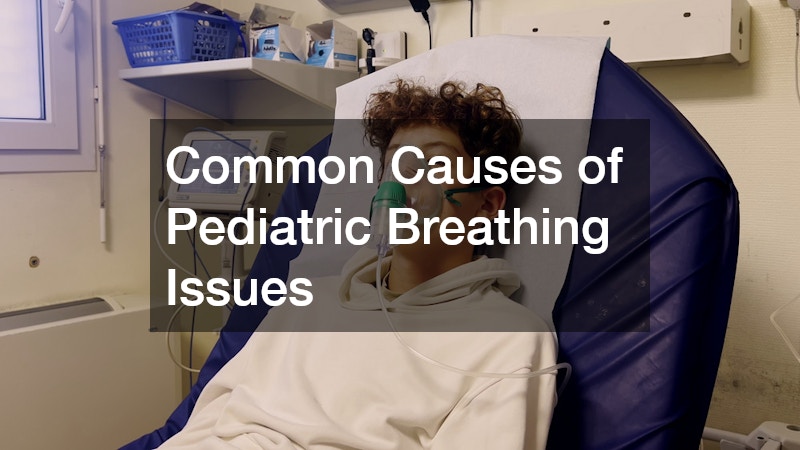Understanding the critical role emergency pediatric care plays in ensuring children’s health and well-being is paramount for caregivers. This article delves into the circumstances that necessitate urgent medical attention, focusing on common yet serious situations that demand readiness and knowledge. Through an examination of key medical incidents—fevers, falls, and breathing difficulties—parents and guardians can be better prepared to make informed decisions in times of crisis.
Temperature Thresholds and When to Be Concerned
A fever in children can often be a sign of the body fighting an infection, but understanding when it crosses the line into a medical emergency is essential. Typically, a fever is considered high if a child’s temperature reaches 100.4°F (38°C) or above. It is particularly concerning in infants under three months old, where even a slight fever warrants immediate medical evaluation due to their developing immune system.
For slightly older children, persistent fevers lasting over 48 hours or consistently rising temperatures require medical advice. Fever thresholds depend on the child’s age and overall health, with specific thresholds prompting emergency visits. Timely intervention is crucial, as it can prevent the escalation of potentially severe underlying issues causing the fever.
Accompanying Symptoms That Indicate an Emergency
Not all fevers necessitate an emergency room visit unless accompanied by other critical symptoms. For instance, seizures, known as febrile seizures, may occur with high fevers and require immediate medical attention. Similarly, symptoms like persistent vomiting, dehydration, or a rash spreading rapidly could signal more serious conditions demanding prompt evaluation.
In some cases, changes in behavior such as lethargy or irritability can be indicative of an underlying complication tied to the fever. Parents should pay close attention to these behavioral cues as they often provide vital insights into a child’s health. Prompt response to accompanying symptoms can significantly alter the trajectory of treatment and recovery.
Assessing the Severity of a Fall
Falls are a common source of injuries in children, yet determining when they necessitate emergency care can be challenging. Evaluating the height and surface of the fall provides initial guidance on potential injury severity. Additionally, observing any immediate changes in the child’s behavior or responsiveness is critical in assessing urgency.
If a child loses consciousness, even briefly, medical evaluation becomes imperative to rule out any significant head or internal injuries. Recurrent vomiting or an inability to console the child post-fall are signs that warrant immediate medical intervention. These assessments guide parents in distinguishing between minor injuries and those requiring emergency response.
Recognizing Signs of Concussions or Internal Injuries
Concussions and internal injuries represent serious concerns following falls and must be swiftly recognized and addressed. A concussion, often indicated by confusion, memory loss, or balance issues, should prompt an emergency room visit for evaluation. Similarly, any signs of internal bleeding, such as abdominal pain or unusual swelling, require urgent medical attention.
Parents should trust their instincts when it comes to subtle but persistent behavioral changes post-fall, as these can be indicators of less visible injuries. Regular monitoring for symptoms like dizziness or headaches can shed light on the presence of concussions. Early detection is crucial for effective management and preventing further harm.
Common Causes of Pediatric Breathing Issues
Pediatric breathing difficulties can arise from various common conditions requiring different levels of intervention. Conditions like asthma, croup, and allergic reactions frequently lead to respiratory issues in children. While many cases can be managed at home, certain symptoms necessitate immediate emergency attention.
Recognition of these triggers is essential for prompt action and effective management. Asthma, which affects millions of children, can rapidly escalate, making parental awareness of warning signs crucial. Equipping families with the knowledge to recognize and respond to these conditions enhances outcomes.
Identifying Signs of Severe Respiratory Distress
Certain signs of respiratory distress in children signal the need for immediate emergency intervention. These include persistent coughing, wheezing, and visible struggling to breathe, indicative of critical conditions like bronchiolitis or severe asthma attacks. Bluish skin or lips, known as cyanosis, further indicates insufficient oxygenation, necessitating urgent medical care.
Recognizing these signs in children is vital, as delayed response to breathing difficulties can induce serious complications. Monitoring the child’s respiratory rate and observing for abnormal sounds or posturing are part of effective assessment. Early action can prevent conditions from reaching life-threatening levels.
Long-term Management and Emergency Appointments
Chronic respiratory issues require strategic long-term management to mitigate the risk of emergencies. Having an action plan in place, including emergency phone numbers and medication instructions, equips families to manage flare-ups efficiently. Regular consultations with healthcare providers refine these plans based on individual needs and response histories.
Effective and timely emergency pediatric care can make a significant difference in outcomes. Being informed and prepared for situations involving fevers, falls, and breathing difficulties is crucial for a child’s health and safety. Through proactive education and understanding of these core issues, parents can mitigate risks and ensure their children receive essential care when genuine emergencies arise.





